How To Install Dam Liners In Kenya
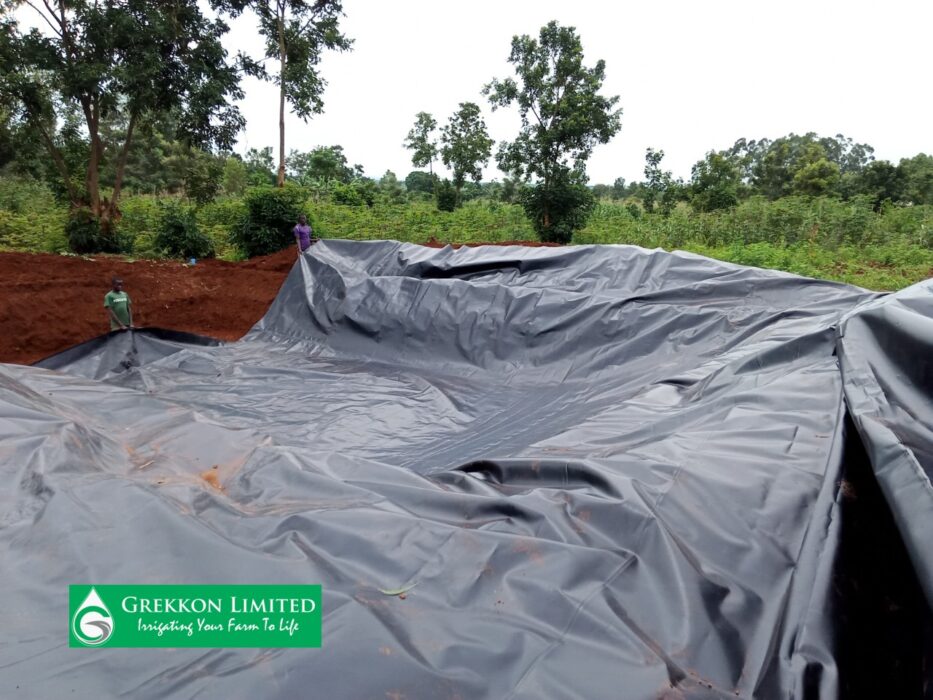
What is dam lining?
It is the lining of the floor and walls of a water pan with a geomembrane material. This material is impermeable and holds the water above it for agricultural use
To cover a reservoir with a dam liner is a simple yet complicated task. Proper dam liner installation in Kenya will guarantee good water collection for irrigation and domestic use. It requires proper coordination so as to achieve the intended objective. Before installation, one must learn how to measure a dam liner so as to determine the area of material needed for the water pan or tank. Grekkon Limited is your number one company in supply and installation of dam liners in Kenya
How do you measure a dam liner?
- Measure the length of the water reservoir
- Measure the width of the water reservoir
- Determine the depth from the center-most part of the water pan which is deemed as the deepest part
- Apply this formula (length+2 depth+2 meters) X (width+2 depth+2meters). The additional 2 meters in each set are for tucking the liner. The dam liner tucking distance from the edges is taken as 1M all around te water pan
Steps on How to Install Dam liners in Kenya
Water Pan Excavation
This is the first step and usually takes the longest time. Excavation is manual with handtools, or with a machine. Most common machines for dam excavation are backhoe loaders, bull-dozers and caterpillars. At excavation, the side walls are inclined at an angle to prevent collapse of the dam.
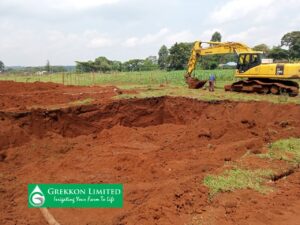
Read Also: How to join dam liners and Quality dam liners in Kenya by Grekkon Limited
Smoothening Of The Water Pan
This is to remove any sharp objects that damage the dam liner. Pour in water on the floor and sides to soften it.
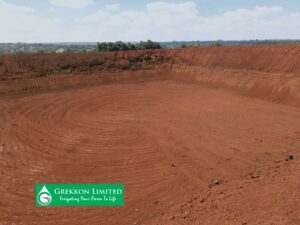
Trench Making
Trenches are dug round the dam where the dam liner will be installed. The size of the trench will depend on the size of the dam and the dam liner thickness. The most popular trench sizes are 1ft deep by 1ft wide and 1.5ft deep by 1.5ft wide.

Observe the trench made around the water pan. it is 1M from the edges of the water pan, and this is where the dam liner will be tucked
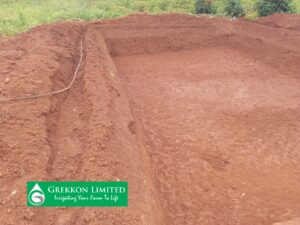
How To Install Dam Liners In Kenya
- Place the dam liner in the reservoir. This way, it takes the shape of the reservoir
- The liner must have an allowance for overlap. Bury the overlap in the trench, then cover with soil for a smooth finish. The trench dimensions will be 0.45M to 0.6M deep, and 0.3M wide. Several casual labourers make the process as smooth as possible. Where no trench has been made, support the dam liner with sand/ soil bags to achieve the same result
- Install an inlet and an over flow. The inlet is a pipe from a river, borehole or from the roof gutter section. Dams that trap run off water have a silt trap with several chambers to trap stones, mud and other debris.
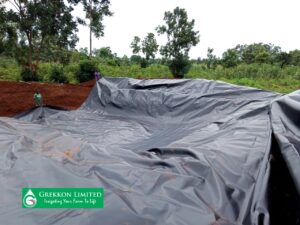
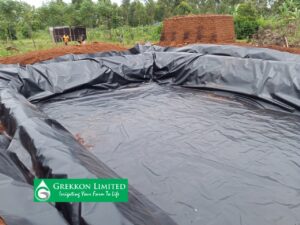
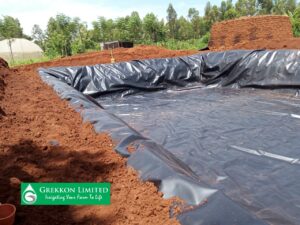
How To Weld Dam Liners
- This is done on site at the point of dam liner installation. It is the joining together of the partially welded dam liner pieces from the factory. Site welding is done when the entire dam liner could not be wholly put together in the factory. This is as a result of weight or bulkiness, which limits lifting and transportation of the bulky and heavy material. The weight size of the portable material depends on the thickness of the dam liner. The thicker it is, the less it is
- A wedge welding machine or a heat gun/ heat blower is the equipment that does dam liner welding. A wedge machine is what does it in the factory. The heat gun is highly portable, and so is best for field joinery
Dam liner welding involves melting the liner material under high temperature at the point of joining them. Once melted, the 2 layers are laid one over the other and as they harden, become one unit. The welded joints must be leak free for the dam liner to work effectively in the tank or water pan. Lined water pans are popular as water storage units for agricultural field crops irrigation in a country that has just one or two rainy seasons

Related Posts
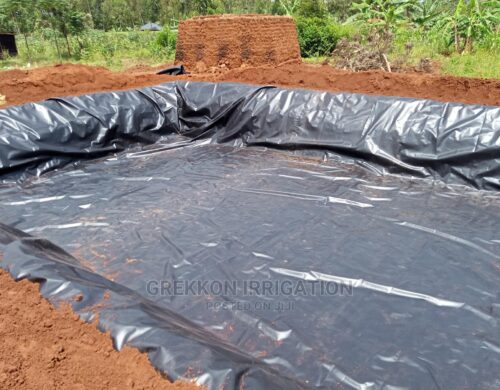
Pond Liner Calculator
In this pond liner calculator article, we answer the following frequently asked questions 1. How is a dam liner calculated? The...
